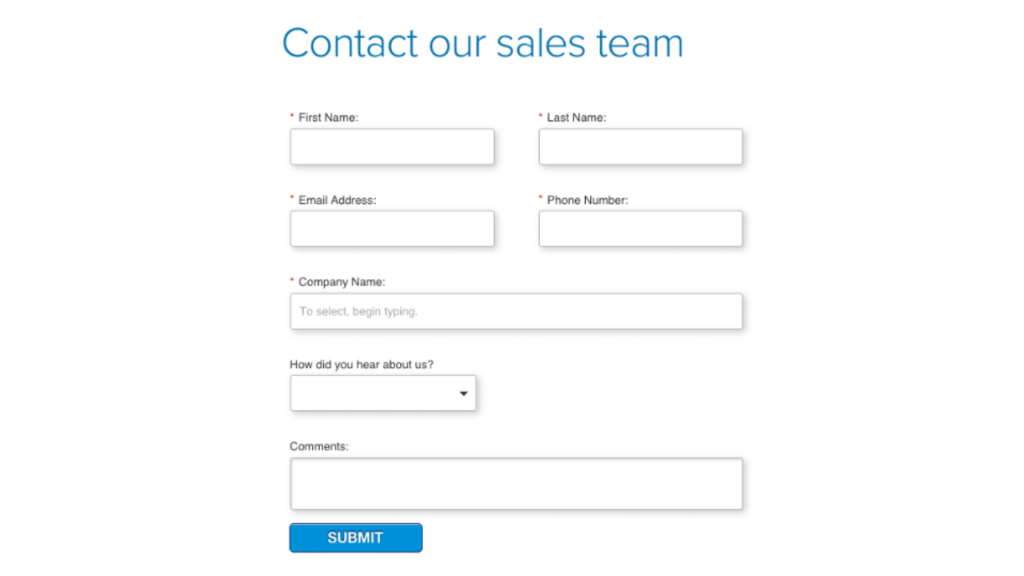Marketing strategies to develop your forwarder website

Created on November 11, 2022
In this article you will get:
In the article below, you will find marketing strategies to develop your forwarder website to help you attract potential partners, and in addition, a step-by-step on how you can do it.
7 things to consider when building a website
Today, in the freight forwarding and logistics industry, no aspect of digital marketing strategies is more important than developing a quality website.
Your forwarder’s website is your company’s gateway to potential freight partners. However, with so many freight forwarders on the market, just having a website is not good enough to stand out and convert leads into engaged customers and freight partners.
What you really need is a well-developed and optimized website. So before you develop your forwarder’s website, keep in mind that:
- Your website reflects your company, your products, your services, and ultimately your brand. Therefore, it’s important to be visually appealing, polished, and professional.
- User Experience (UX) plays a key role in helping visitors use, understand, and stay on your website.
- Use language that makes sense to your audience.
- Visitors have short attention spans: be accurate, be relevant, and regularly update the content on your site.
- Offer multiple points of contact: phone, email, social media, and perhaps an easy-to-use contact form.
- Above all, make sure that this information is readily available on an easy-to-find contact page (if not on every page of your site).
- Make sure your site is optimized for search. There are several rules and guidelines for effective SEO. It’s essential that you take a look at them to build a site that will generate traffic.
These basic principles of marketing strategies to develop your forwarder website will give you a starting point. Now let’s take a deeper dive…
CHECK-LIST: must-have on your freight forwarder’s website
Now that you know the basics of what a website should look like, it’s time to dig a little deeper.
Remember that your website is one of the main tools for converting leads into freight partners. Therefore, you must ensure that they can easily find everything they need.
Here is a check-list of what you need to include on your forwarder’s website:
- Home page:
The home page of your website is the gateway to new customers and freight partners. It’s essential that it contains a brief introduction of your company, a listing of the services you offer, and the office contacts/addresses (if you have branch offices, add their contacts/addresses as well);
In addition, you can also add your company’s mission, vision, and values. If you wish, it’s also recommended that you add some images of your company to compose the page layout.
- “About Us” page
It’s very important that you have a page on your website dedicated to introducing your company.
There, you can make a more complete presentation of your company. Tell the story of your company and its differentials, you can also include a listing of the logistics certifications you have and the logistics networks you participate in. On this page, you can also introduce your team, especially the decision-makers in your company.
- “Services” page
Your company’s services page is an essential part of your forwarder’s website. It is where new customers and partners can find out whether your company is qualified for the service they need.
Remember to clearly describe which services your company offers and which modals, regions, or even products you specialize in. Adding photos of the services you offer is a bonus.
- “Contact us” page
This is one of the most important pages on your website and it needs to be always up to date. This is where you should add your company’s contacts (email addresses, phone numbers, and office addresses).
In addition, you can also add a simple contact form, like the one in the image below.

You are more than free to add other pages besides the ones above to your freight forwarder’s website, just remember to add relevant content on each one and make sure the information is laid out clearly, okay?
Get to work!
Your forwarder’s website is one of the ways in which a potential partner can have the first contact with your company. Therefore, it’s one of the most important assets in the digital environment.
With the marketing strategies to develop your forwarder website that we gave above, you have everything you need to build a good website that will attract more and more partners to your forwarding company. So now it’s time to get down to business!
